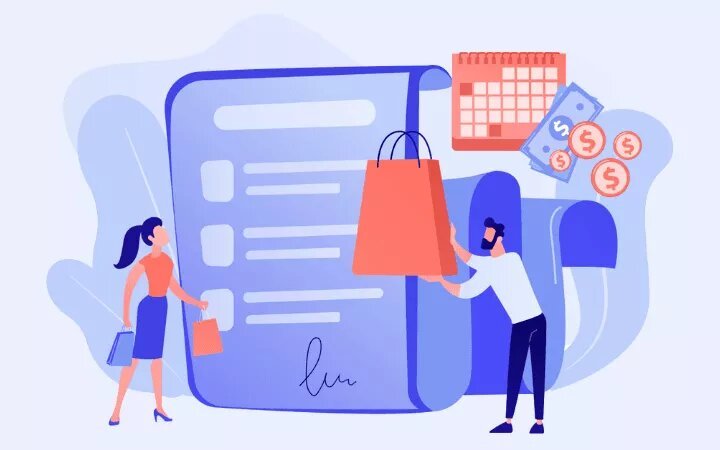
Trend Analysis: The Buy Now Pay Later Revolution
Buy Now, Pay Later: New Payments Trend
The traditional credit card market has recently been shaken by a new wave of Buy Now Pay Later (BNPL) services, which allow consumers to purchase an item and pay for it later in interest-free installments.
BNPLs are particularly popular among tech-savvy Millennials and Generation Z, who are more cautious with credit cards, as they represent a low-commitment, user-friendly and budget-focused alternative to credit cards. The absence of interest fees levied by BNPL platforms is projected to boost market growth.
What is Buy Now Pay Later?
“Buy Now, Pay Later” schemes are loan financing solutions that resemble credit cards in some ways. It is a short-term micro credit model. BNPL lets customers buy something, usually online, and pay for it later, in full or in installments, with no charge for short-term financing.
Once the lender makes a payment on your behalf, you must refund the money within a certain time frame. These can be anything from four bi-weekly payments to 60-month installments.
If you do not repay the loan within the specified time frame, the lender may charge you interest. Further delay may negatively affect your credit score. This form of loan may be appealing to individuals who lack a traditional credit history or are uninterested in managing credit cards.
BNPL has been in operation for many years. One-third of American consumers had used a BNPL service as of July 2020. Nonetheless, the growth of ecommerce has expedited the emergence of new digital suppliers.
Buy Now Pay Later Market
Millions of people are turning to digital funding as a result of the coronavirus pandemic’s economic consequences. As a result of the impact of the pandemic and the overall appeal of the Buy Now Pay Later Revolution, the industry is project to generate $680 billion in transaction volume by 2025.
Furthermore, there are already hints that certain companies may outcompete others and gain market share. From the estimated $285 billion in 2018, the market is expected to increase at a CAGR of 13.23%. As e-commerce grows, so do customer requirements.
BNPL Target Clients
Young people aged 25 and under, who have a variety of payment options, are the target clients of Buy Now Pay Later as this generation was born into a technologically advance world. In addition, They prefer ease and quickness over traditional credit and loans.
Users generally have a simple and direct experience with Buy Now Pay Later services. Customers only need to tap on Pay Later during the checkout process. This will split the total payment over multiple periods (interest-free) instead of requiring customers to pay everything upfront. Customers may repay the loan on a monthly, semi-monthly, or weekly basis, according to the service provider.
According to PYMNTS data, 87 percent of customers age 22 to 44 are interested in monthly installment plans. Moreover, buy now and pay later changing the way credit works and it may soon compete with credit cards as a preferred payment method.
Future of BNPL
The future of Buy Now, Pay Later seems promising. According to IBIS World, the industry is expect to develop at a rate of 9.8% per year for the next five years, eventually surpassing $1 billion.
There will also be an increase in the number of buyers and retailers already using it. For instance, Klarna had 87 million active users worldwide by February 2021, with over 17 million from the US and 14 million from the UK. The number of retailers is also astonishing: 200,000 in the world.
Additionally, while the majority of sales are currently devote to apparel and accessories, this trend’s bold promise extends far beyond this segment. Mobile banking solutions may make it easier for consumers to budget for healthcare, holidays, home improvements, and electronics.
An omnichannel application is another exciting feature we’re likely to witness. As the retail industry adopts omnichannel in the hopes of providing a better customer experience and increasing revenue, BNPL can help accelerate that shift by offering choices such as buy online and pick up in-store, buy online and return in-store, and even buy in-store and ship-to-home.
In fact, extending later payments to in-store transactions is part of the same omnichannel strategy. While this type of credit is now primarily use in digital stores, some retailers have also implemented it within their physical locations.
agency banking solutions are also likely to venture into the traditional banking sector. Klarna has introduced an app that enables users to make purchases on any product with a virtual Klarna card. Afterpay is introducing an in-store solution that will provide customized recommendations based on a customer’s activities.
PayPal and other well-known payment providers already have their own Buy Now Pay Later services. Other companies, such as Citibank and American Express, are also offering post-transaction financing at far lower rates.
Bottom Line
It’s clear that BNPL will be around for a long time. The regional market has piqued the interest of global businesses, as well as local players. BNPL will become the norm across e-commerce platforms as the digital payment ecosystem evolves. The Buy Now, Pay Later revolution has arrived, and now is the time for consumers and businesses to take advantage of it.



